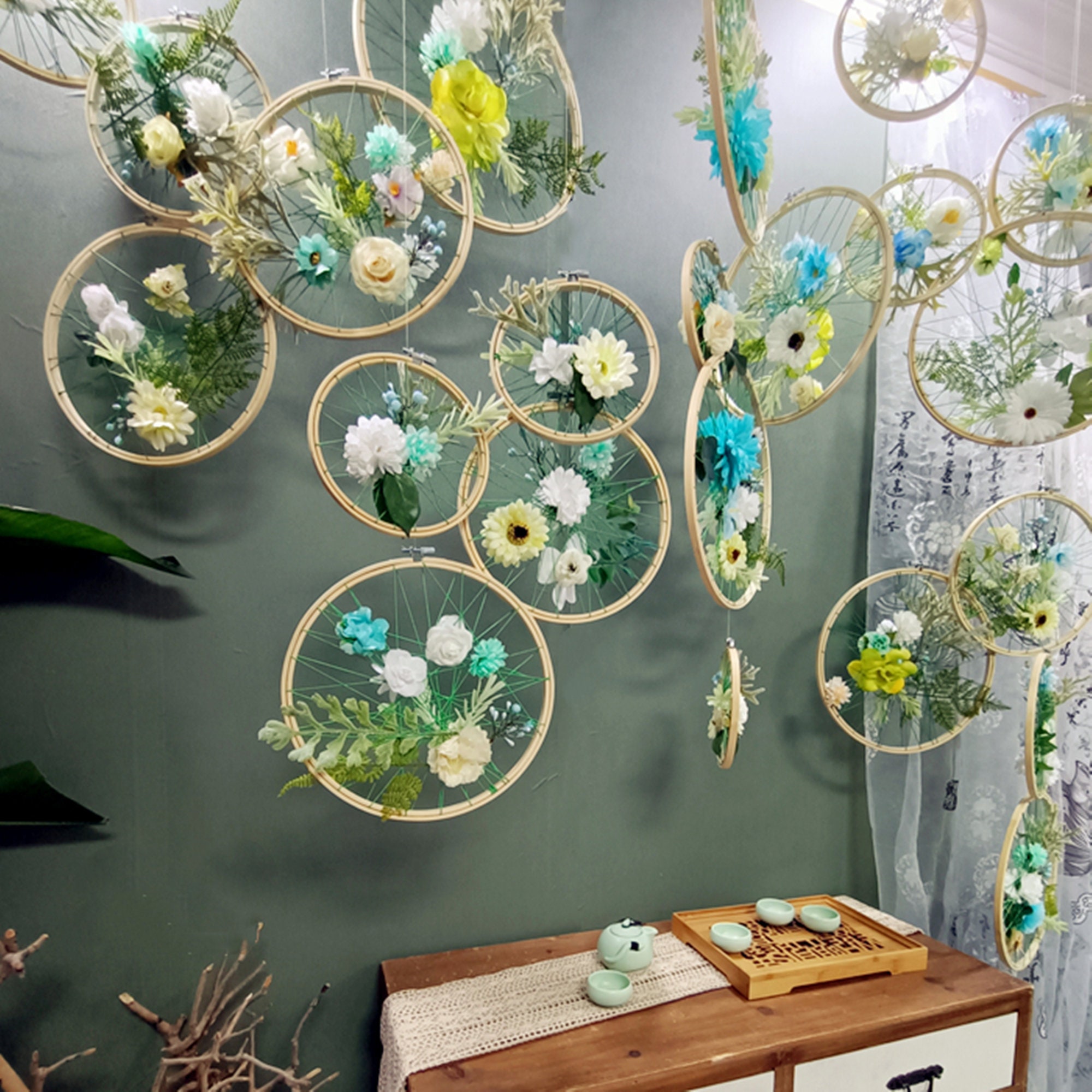Embroidery wall decor is not just another trend; it’s an elegant expression of creativity that can transform any space. As an avid crafter with years of experience dabbling in embroidery, I can confidently say that this art form lends a unique charm to home decor. From vintage to modern aesthetics, incorporating embroidery can elevate your interiors significantly. In this article, we will explore various embroidery wall decor styles, tips for creating your own pieces, and ways to incorporate them into your home. Let’s dive in!
Why Choose Embroidery Wall Decor?
Embroidery wall decor is more than just pretty fabric; it has practical benefits too. Here are some reasons to consider:
- Personal Touch: Hand-stitched pieces carry a personal sentiment, making your space feel uniquely yours.
- Versatility: Whether you prefer a boho, minimalist, or rustic look, embroidery fits in seamlessly.
- Artistic Expression: It allows you to express your creativity and personality through colors and designs.
- Texture and Depth: Embroidery adds a tactile element to your walls that flat prints can’t match.
Popular Styles of Embroidery Wall Decor
Embroidery comes in various styles, each offering its own unique aesthetic. Let’s explore some popular options:
1. **Modern Minimalist Embroidery**
This style emphasizes clean lines and simplicity. Think of small hoop art pieces with geometric designs or monochromatic patterns. These can easily complement modern furnishings.
2. **Traditional/Classic Embroidery**
Classic embroidery often features intricate floral designs or historical motifs. These pieces are perfect for traditional home settings and can be passed down through generations.

3. **Bohemian Embroidery**
Boho style embraces vibrant colors and eclectic designs. Large tapestries or dreamcatchers made from embroidery can create a stunning focal point in any room.
4. **Abstract Embroidery**
Abstract designs are perfect for modern art lovers. They often use unconventional colors and patterns that can evoke emotion and provoke thought.

Creating Your Own Embroidery Wall Decor
Now that you’re inspired, let’s talk about how you can create your own wall decor!
Materials Needed
- Embroidery hoop
- Fabric of your choice
- Embroidery floss or thread
- Needles
- Scissors
- Stabilizer (optional)

Basic Steps to Get Started
- Select a design or create your own sketch.
- Prepare your fabric by ironing and securing it in the embroidery hoop.
- Transfer the design onto the fabric using a wash-away pen or pencil.
- Stitch the design, experimenting with various stitches. Don’t worry about making it perfect; the beauty of handmade items lies in their imperfections!
- Once completed, secure your fabric and trim excess. Hang it up and enjoy!
Incorporating Embroidery Decor into Your Home
Now that you’ve created your piece, how can you incorporate it into your living space? Here are some ideas:

1. Gallery Wall
Create a gallery wall featuring a mix of embroidery pieces and other art forms for a cohesive look. Use frames in varying sizes for added interest.
2. Statement Piece
Let a large embroidered piece be the focal point of a room. Consider hanging a decorative wall tapestry above your couch or bed.

3. Accent in Unexpected Places
Don’t limit embroidery art to just living rooms. Use smaller pieces in hallways, bathrooms, or even in the kitchen for a splash of color.
4. Seasonal Decor
Change your embroidered decor seasonally. Swap out designs for holidays or seasons to keep your decor fresh and exciting.

Comparing Different Types of Embroidery Techniques
| Technique | Description | Pros | Cons |
|---|---|---|---|
| Cross-Stitch | A popular method using X-shaped stitches. | Easy to learn, versatile. | Time-consuming for large projects. |
| Embroidery Floss | Using multi-strand thread for colorful designs. | Vibrant colors, various textures. | Can fray if not properly managed. |
| Crewel Embroidery | Using wool thread for detailed designs. | Rich texture, traditional designs. | More complex stitches required. |
| Freehand Embroidery | Stitching without a pattern for organic designs. | Creative freedom, unique results. | Requires more experience. |
Pros and Cons of Embroidery Wall Decor
Like any decor style, there are advantages and disadvantages to embroidery wall decor. Here’s a breakdown:
Pros
- Unique and personalized touch to any space.
- Crafting enhances creativity and can be therapeutic.
- Wide variety of styles to fit any home aesthetic.
Cons
- Can be time-consuming to create unique pieces.
- Requires some crafting skills or willingness to learn.
- May not suit all interior design styles.
FAQs About Embroidery Wall Decor
What type of fabric is best for embroidery wall decor?
Common fabrics include cotton, linen, and canvas. Each has its own texture and appearance, so choose based on the desired look.
How do I care for embroidered wall hangings?
Keep them out of direct sunlight to prevent fading. Dust regularly and, if necessary, gently spot clean with a damp cloth.
Can I use embroidery for outdoor decor?
While traditional embroidered pieces are best indoors, there are outdoor-friendly materials available. Ensure they are UV resistant for longevity.
How can I frame my embroidery art?
Use a shadow box frame to preserve the texture and depth of your work. Ensure it’s lightweight to avoid pulling on the stitches.
Conclusion
Embroidery wall decor can transform your home while providing an outlet for personal expression and creativity. Whether you decide to purchase handmade pieces or dive into crafting your own, the beauty of embroidery is sure to add warmth and charm to any space. I hope you feel inspired to incorporate this delightful art form into your home decor. Happy stitching!